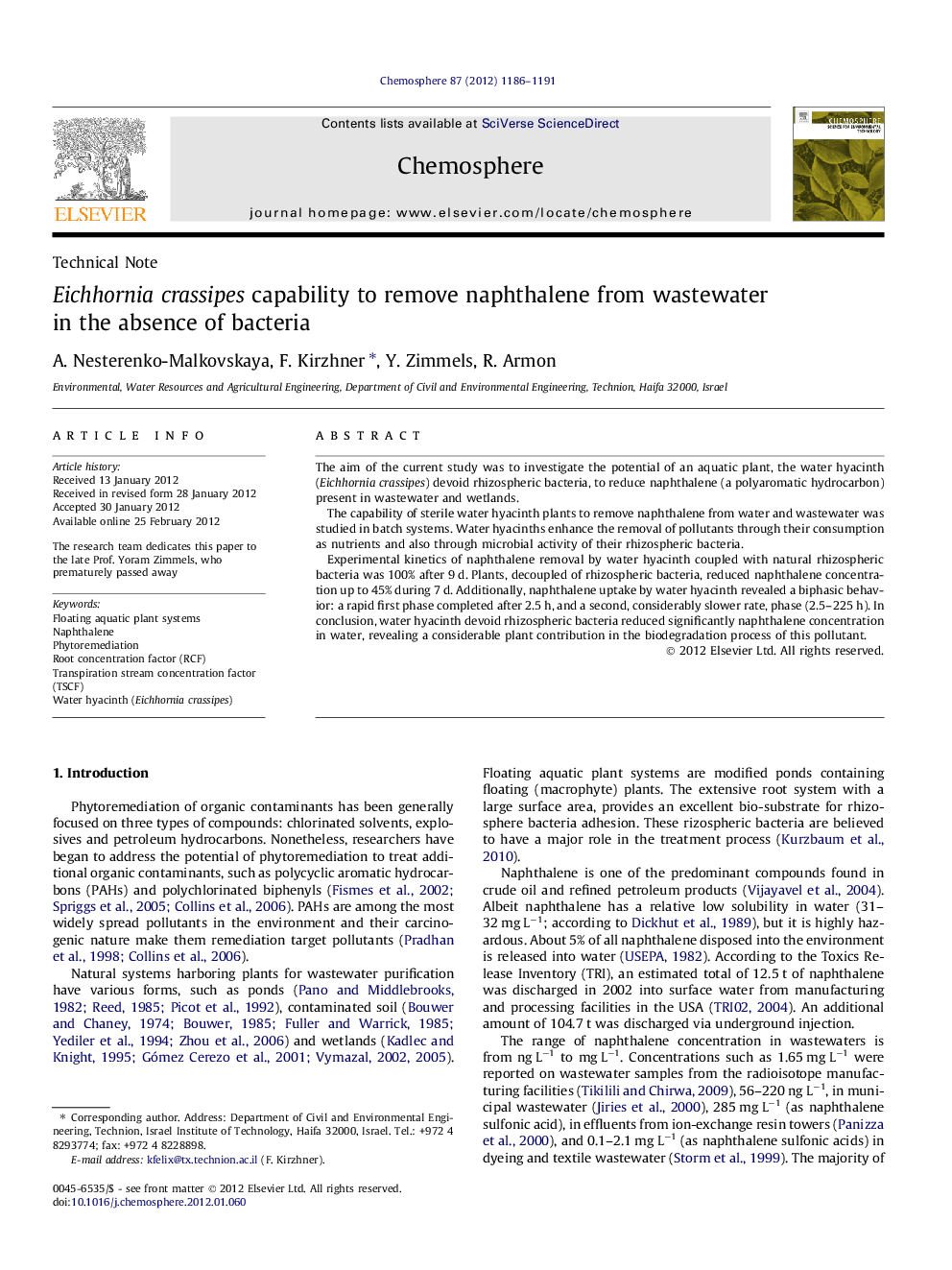| Article ID | Journal | Published Year | Pages | File Type |
|---|---|---|---|---|
| 4410103 | Chemosphere | 2012 | 6 Pages |
The aim of the current study was to investigate the potential of an aquatic plant, the water hyacinth (Eichhornia crassipes) devoid rhizospheric bacteria, to reduce naphthalene (a polyaromatic hydrocarbon) present in wastewater and wetlands.The capability of sterile water hyacinth plants to remove naphthalene from water and wastewater was studied in batch systems. Water hyacinths enhance the removal of pollutants through their consumption as nutrients and also through microbial activity of their rhizospheric bacteria.Experimental kinetics of naphthalene removal by water hyacinth coupled with natural rhizospheric bacteria was 100% after 9 d. Plants, decoupled of rhizospheric bacteria, reduced naphthalene concentration up to 45% during 7 d. Additionally, naphthalene uptake by water hyacinth revealed a biphasic behavior: a rapid first phase completed after 2.5 h, and a second, considerably slower rate, phase (2.5–225 h). In conclusion, water hyacinth devoid rhizospheric bacteria reduced significantly naphthalene concentration in water, revealing a considerable plant contribution in the biodegradation process of this pollutant.
► Presented potential of the water hyacinth to remove naphthalene from wastewater. ► Kinetics of naphthalene removal by water hyacinth was studied. ► Distribution of naphthalene uptake between leaves and roots was studied. ► The role of a sterile plant, in enhancing the removal kinetics was demonstrated. ► The combined strategy (plants and bacteria) shows a potential to remediate PAHs.
